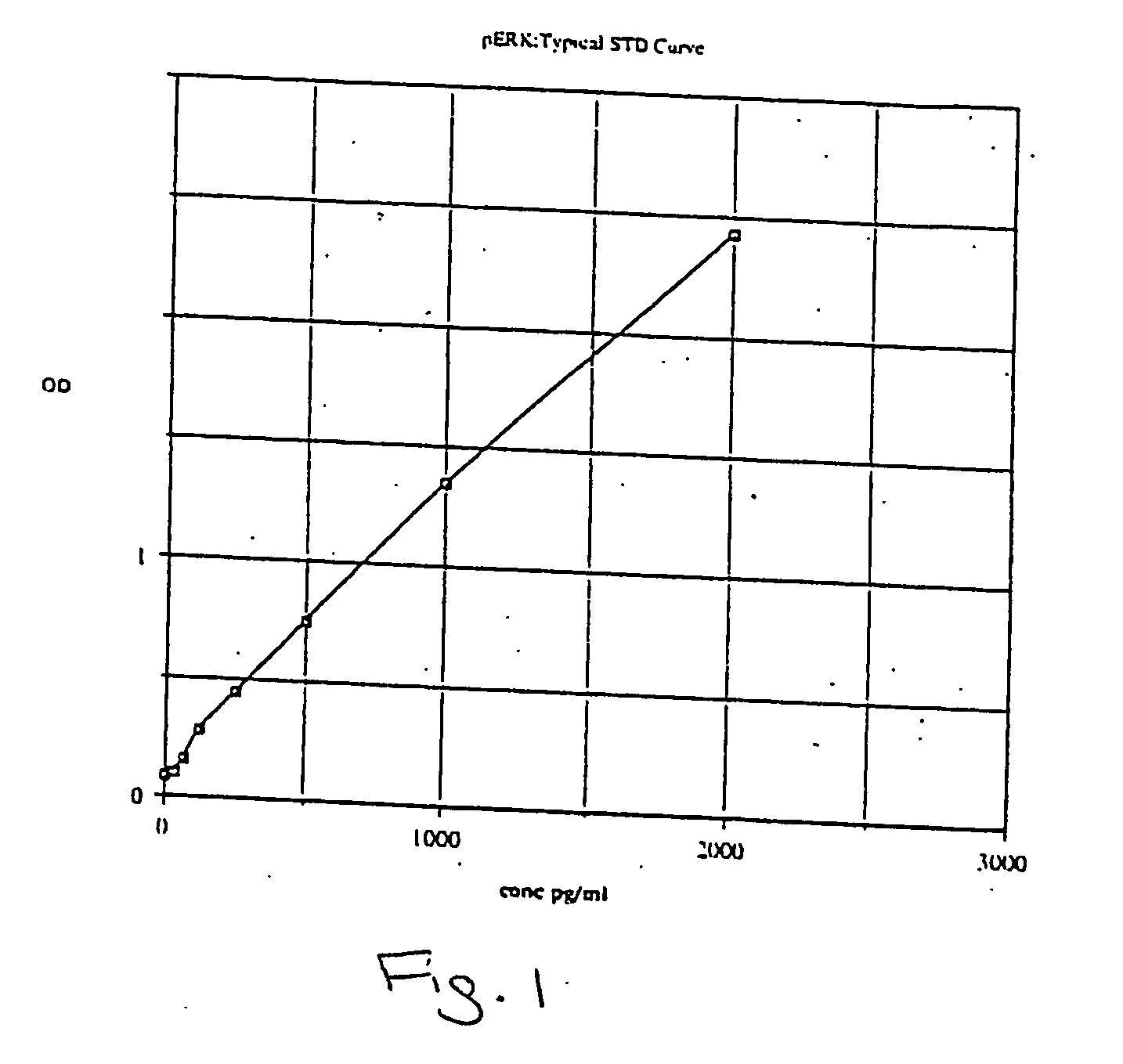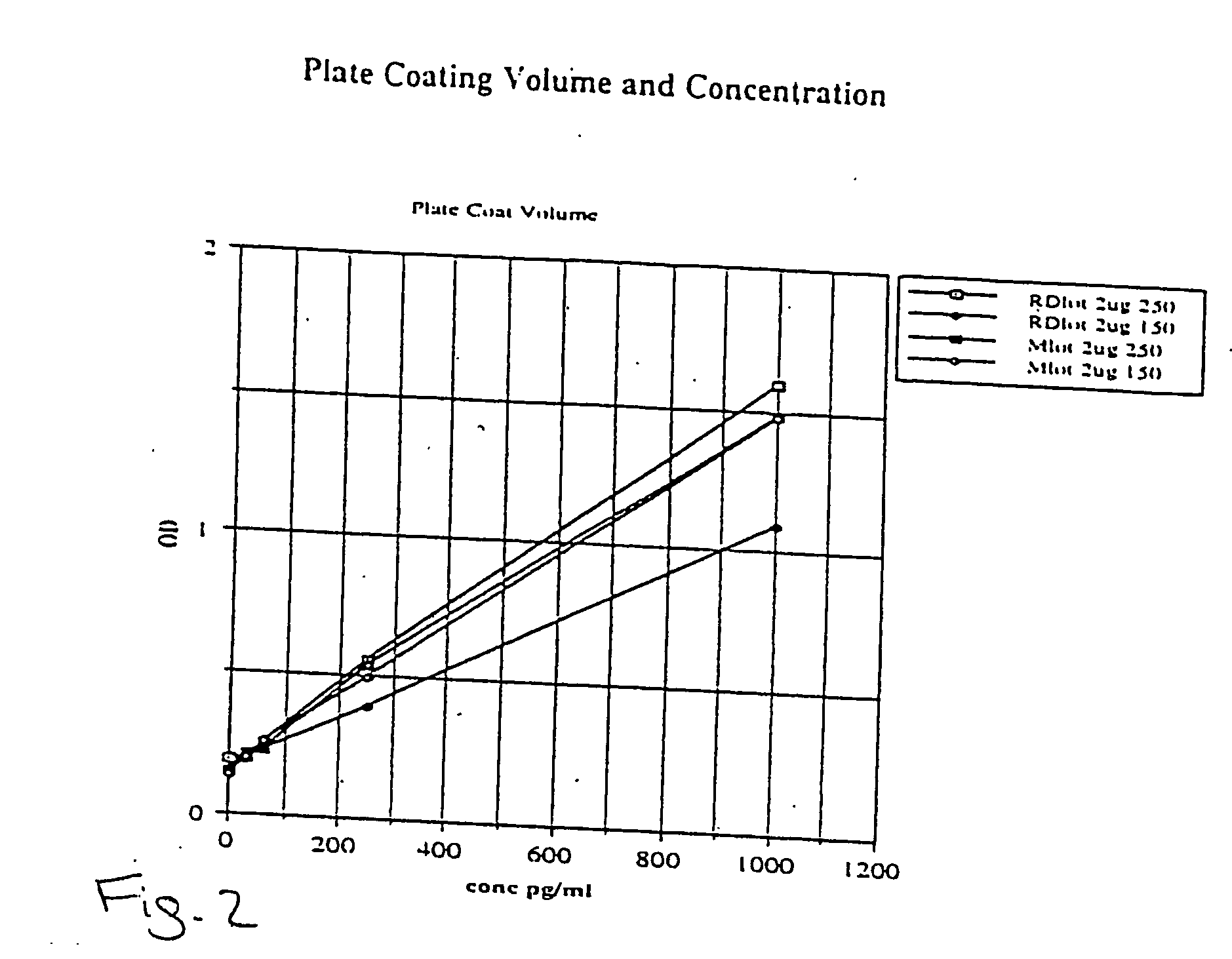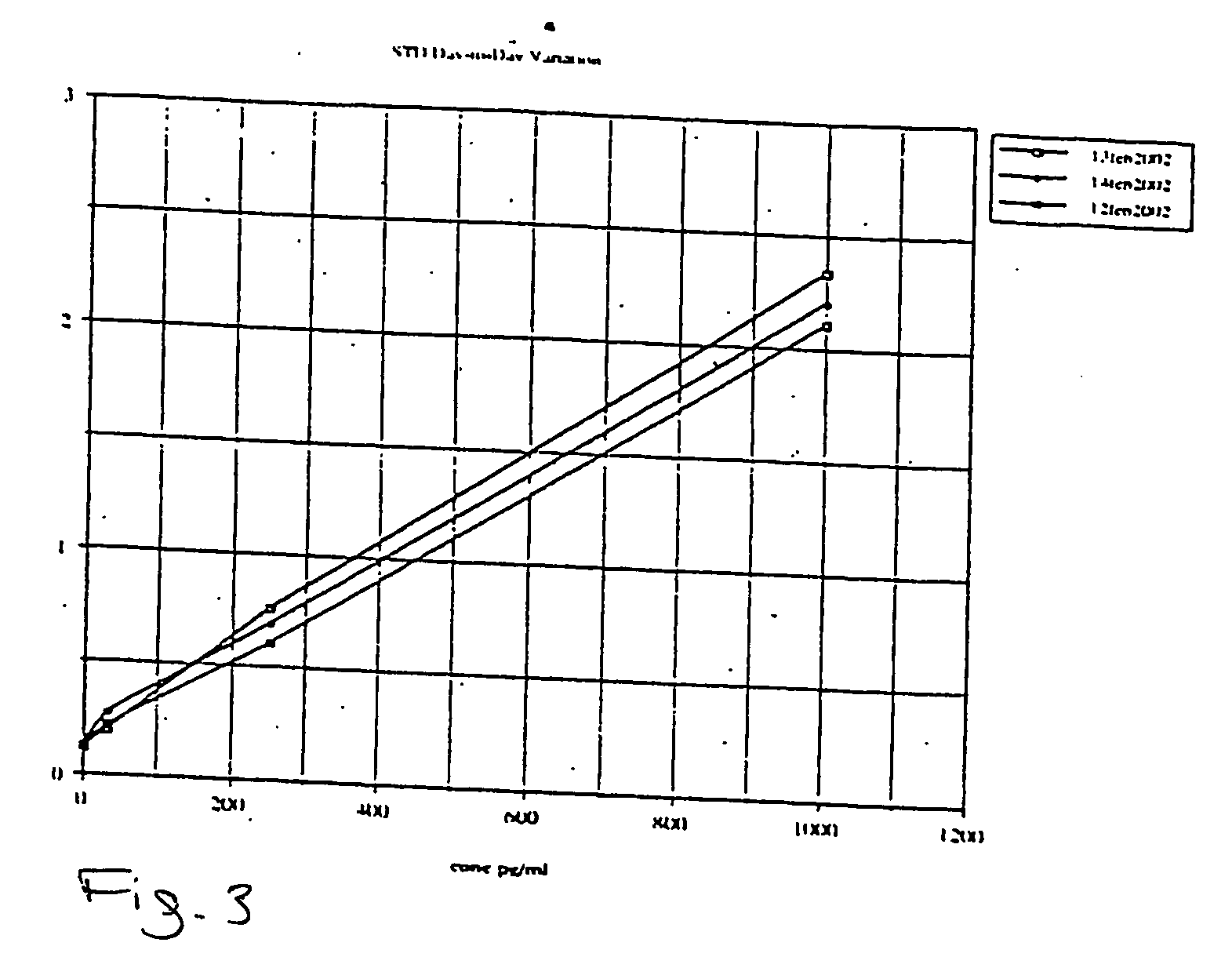Phosphokinase assay
a phosphokinase and assay technology, applied in the field of phosphokinase assay, can solve the problems of difficult precision, inability to convert modified proteins into other forms, and process taking 36 hours or more to complete,
- Summary
- Abstract
- Description
- Claims
- Application Information
AI Technical Summary
Problems solved by technology
Method used
Image
Examples
example 1
[0054] In order to allow faster and more precise measurement of such molecules in large numbers of samples, methods that allow the transient phosphorylated proteins to be detected and quantified accurately needed to be developed. The easiest way to accomplish the effect was to develop an ELISA method for phosphorylated proteins. ELISA's have been used in both clinical and research applications for a number of years, but the measurement of phosphorylated proteins required significant modifications.
[0055] Most typical ELISA products are designed to measure stable non-modified proteins. An example is the ELISA for human interleukin 6 (hlL-6). In the kit no special precautions are needed in the preparation of the components of the kit or with the samples to be tested in order to protect the hlL-6 in the standard or samples, as the hlL-6 is stable for significant periods of time. In the preparation of the hlL-6 kit a monoclonal antibody to hlL-6 is bound to the microtiter plate by disso...
example 2
[0063] Applicants created a phospho-Extracellular signal-Regulated Kinase (pERK) ½ TiterZyme® Enzyme Immunometric Assay (EIA) kit. The kit is a complete kit for the quantitative determination of pERK ½ in cell lysates. The kit uses a monoclonal antibody to ERK immobilized on a microtiter plate to bind pERK in the standards or sample. A recombinant pERK Standard is provided in the kit. After a short incubation the excess sample or standard is washed out and a rabbit polyclonal antibody to pERK is added. The antibody binds to the pERK captured on the plate. After a short incubation period, the excess antibody is washed out and donkey anti-rabbit IgG conjugated to Horseradish peroxidase is added, which binds to the polyclonal pERK antibody. Excess conjugate is washed out and substrate is added. After a short incubation period, the enzyme reaction is stopped and the color generated is read at 450 nm. The measured optical density is directly proportional to the concentration of pERK in e...
PUM
 Login to View More
Login to View More Abstract
Description
Claims
Application Information
 Login to View More
Login to View More - R&D
- Intellectual Property
- Life Sciences
- Materials
- Tech Scout
- Unparalleled Data Quality
- Higher Quality Content
- 60% Fewer Hallucinations
Browse by: Latest US Patents, China's latest patents, Technical Efficacy Thesaurus, Application Domain, Technology Topic, Popular Technical Reports.
© 2025 PatSnap. All rights reserved.Legal|Privacy policy|Modern Slavery Act Transparency Statement|Sitemap|About US| Contact US: help@patsnap.com



